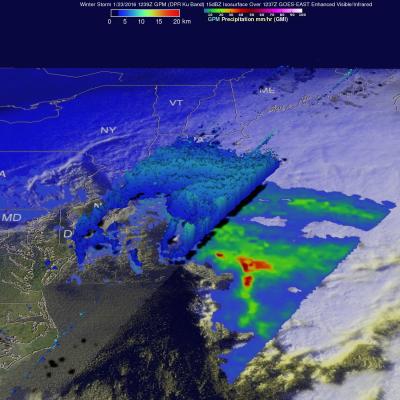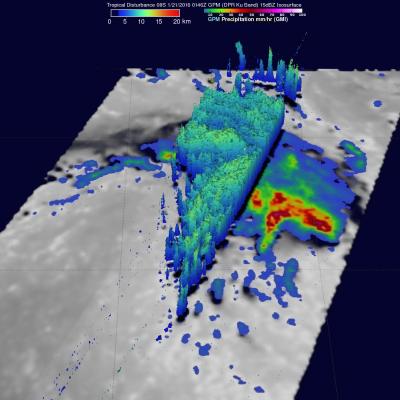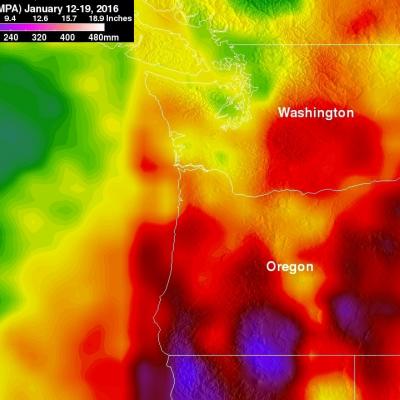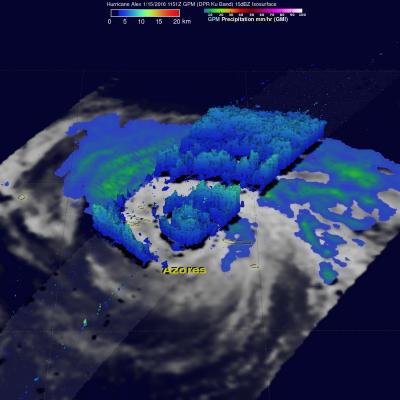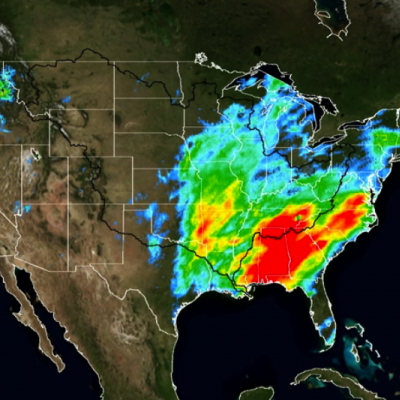Developing Tropical Cyclone Viewed By GPM
The GPM core observatory satellite saw a tropical cyclone developing in the South Indian Ocean east of Madagascar on January 21, 2016 at 0146 UTC. GPM's Microwave Imager (GMI) and Dual-frequency Precipitation Radar (DPR) measured precipitation in the potential tropical cyclone. The most intense showers were shown by the GMI instrument to be dropping rain at a rate of over 71 mm (2.8 inches) per hour in strong storms to the northeast of the tropical low's center of circulation. GPM's radar (DPR) viewed a swath of data to the west of the developing tropical cyclone center where rain was measured


